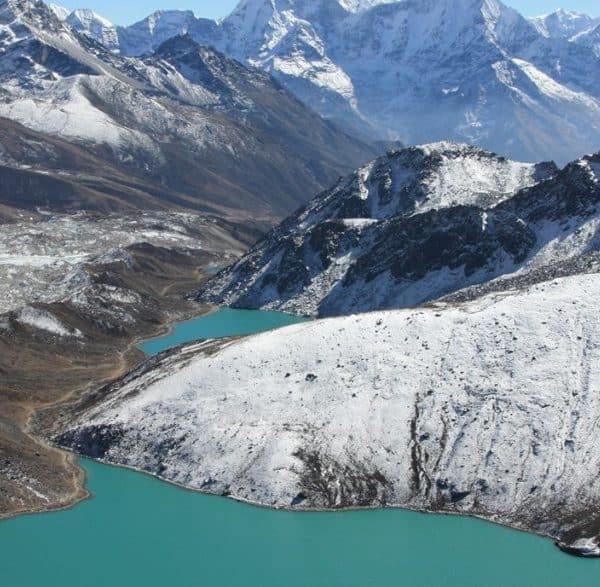Estimated reading time: 2 minutes
Once you reach Lukla Airport, the trek begins, and you will trek to Phading (2610m), a nice local settlement. On the second day, you’ll trek to Namche Bazaar (3400m), a unique hillside village. At just over 3400m above sea level, it’s an ideal spot for acclimatization, higher than many are accustomed to without reaching the trek’s dizzying heights. The trek then heads towards Thame and then Nangpa Valley.

Three Passes Trek of Everest Base Camp
After this, you’ll encounter Renjo La (5340m) – the first of the three high passes – particularly challenging. Therefore, a good level of fitness is vital while crossing the passes. After crossing the Renjo La, you’ll have a stunning view of Mt. Everest and the Crystal Gokyo Lake.
During your stay at Gokyo Lake, you’ll spend two nights exploring the hidden valley. This includes visiting the 4th Lake and a half-day hike to Gokyo Peak (5483m). You will then cross the 2nd Pass – Cho La (5420m) in a 2–day trek, rejoin the main Everest trail and head towards Lukla Airport. You’ll then trek downwards to Lobujue before making your way to Kongma La (5400m), the last of the high passes, followed by the summit of Chukhung, the final peak. Here, you’ll find unparalleled views of the North Ridge, the surrounding area, and Cho Oyu.
Return to Lukla after successful completion of the Three Passes Trek
Coming around in a full circle, it brings you back to Lukla through many villages rich in culture and tradition, such as Dingboche, Pangboche, Thyangboche, Namche Bazar, Manjo and Phakding. Once back in Kathmandu, you’ll have a chance to discover the city properly, get a hotel to rest in or allow yourself to take in what you’ve just achieved.
Essential Permits for Three Passes Trek
Firstly, obtain the TIMS Card, mandatory for all trekkers, aiding in safety and emergencies. Secondly, the Sagarmatha National Park Permit for park entry should be secured to support conservation efforts. Lastly, acquire the Khumbu Rural Municipality Entry Permit for accessing Khumbu region trails. Obtain these permits through authorized agencies or government offices in Kathmandu or trekking starting points, such as Lukla. Throughout your journey, ensure compliance with regulations and conservation practices by carrying them along.





